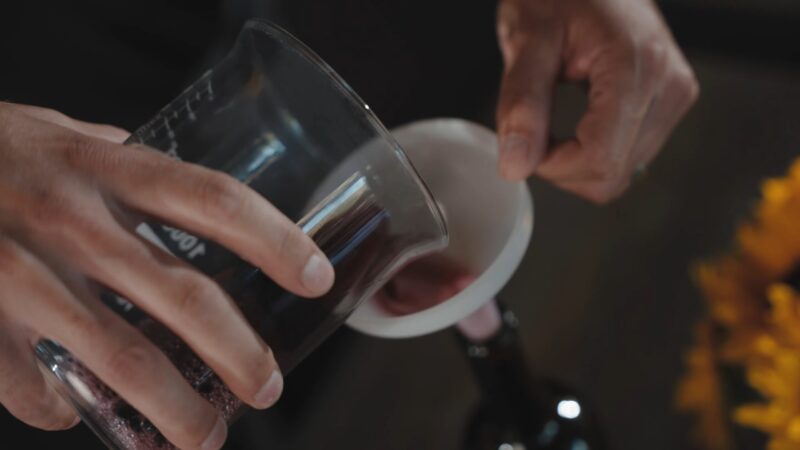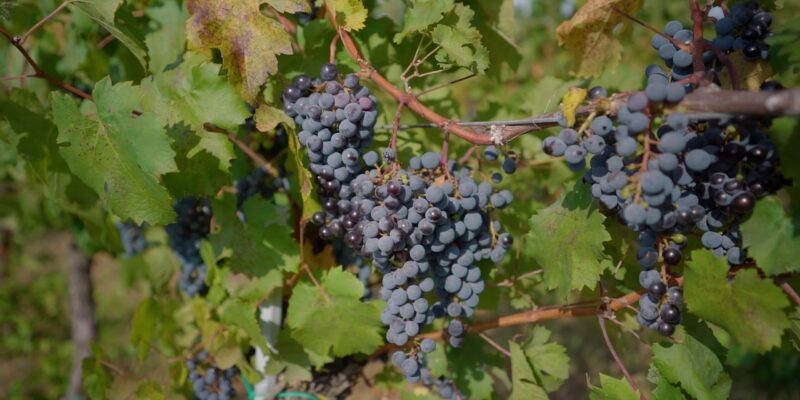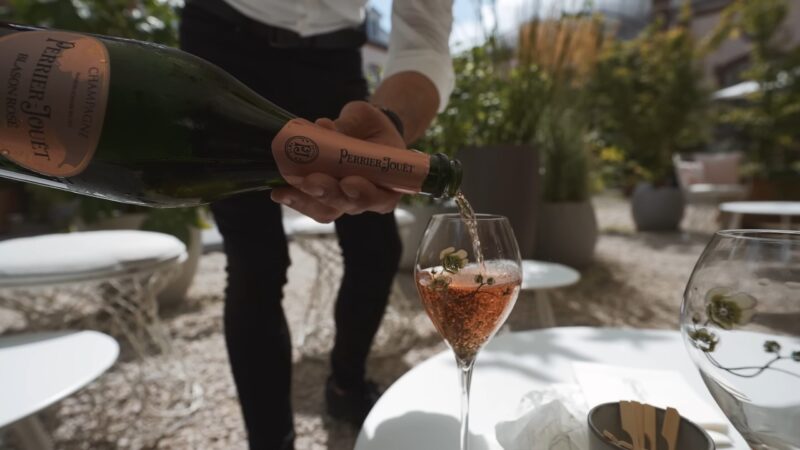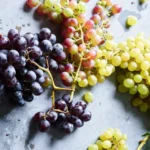The world of wine is vast and intricate, filled with terms that may seem foreign to the uninitiated. One such term that often piques curiosity is ‘Cuvée’. But what exactly does it mean? Let’s dive deep into the world of wines and unravel the mystery behind this term.
At its core, the term ‘Cuvée’ is derived from the French word “cuve”, which means a large vat or tank. In the context of winemaking, ‘Cuvée’ typically refers to a specific blend or batch of wine. It’s not just any blend, but one that the winemaker believes showcases the best of what they have to offer.
Historical Roots
The history of ‘Cuvée’ is as rich as the wine it represents. The term has been used for centuries in the Champagne region of France. Here, it was traditionally used to denote the first, and best, juice extracted from the grapes during the pressing process. This juice was reserved for the finest Champagnes, while the subsequent pressings (often of lesser quality) were used for other wines.
Modern Usage and Variations

Today, the term ‘Cuvée’ has evolved and is used more broadly across various wine regions and types. It’s no longer restricted to Champagne or even to France. Winemakers around the world use the term to signify a wine blend that they believe is special or unique in some way.
For instance:
- Sparkling Wines: Many producers of sparkling wines, outside of the Champagne region, use ‘Cuvée’ to denote their premium blends.
- Still Wines: It’s not uncommon to find the term on bottles of still wines, indicating a special blend or batch.
- Regional Variations: In some regions, ‘Cuvée’ might be used to indicate a wine made from a specific vineyard or a blend that’s produced in limited quantities.
The Art of Blending

One might wonder, why blend wines at all? The art of blending is central to the creation of many of the world’s most renowned wines. By combining wines from different grape varieties, regions, or even vintages, winemakers can achieve a balance of flavors, aromas, and textures that might be impossible with a single wine.
‘Cuvée’ represents the pinnacle of this art. It’s the winemaker’s signature, a testament to their skill and vision.
When you see ‘Cuvée’ on a wine label, it’s an invitation to experience something special. However, it’s essential to approach it with a discerning eye. Since the term is not strictly regulated in many regions, its presence doesn’t always guarantee quality. It’s always a good idea to research the winemaker, the region, and the specific wine to ensure you’re getting a genuine ‘Cuvée’ experience.
Pairing and Enjoying ‘Cuvée’
Given the premium nature of many ‘Cuvée’ wines, you might wonder how best to enjoy them. Here are some tips:
- Temperature: Like all wines, ‘Cuvée’ wines have an ideal serving temperature. For sparkling wines, this is typically between 6-10°C, while for still wines, it might vary based on the specific blend.
- Pairing: The rich and complex nature of many ‘Cuvée’ wines makes them ideal for pairing with a variety of foods. Think of dishes that match the wine’s intensity and complexity.
- Glassware: The right glass can enhance your wine experience. For sparkling ‘Cuvée’, a flute or tulip-shaped glass is ideal. For still wines, the choice of glass might vary based on the wine’s body and aroma.
The Global ‘Cuvée’ Movement

The term ‘Cuvée’, with its deep-rooted French origins, has transcended borders and become a symbol of excellence in winemaking worldwide. This global embrace of the ‘Cuvée’ concept is not just a testament to the universal appeal of quality wine but also a reflection of the interconnectedness of the modern wine industry.
California’s New World Elegance
In the sun-kissed valleys of California, the ‘Cuvée’ movement has found a new home. The state, known for its innovative winemaking techniques, has adopted the ‘Cuvée’ tradition with a twist.
Californian winemakers often blend traditional European grape varieties with local ones, producing ‘Cuvée’ wines that are both familiar and refreshingly new. The result? Wines that carry the robustness of the New World while paying homage to Old World elegance.
Australia’s Bold Experimentation
Down under, Australian winemakers have been at the forefront of experimenting with wine blends. Their version of ‘Cuvée’ often involves blending grapes from different regions of the vast continent-country.
This inter-regional blending has given birth to wines with complex flavor profiles, making Australian ‘Cuvée’ a favorite among those who seek bold and unexpected flavors.
South Africa’s Rich Heritage

South Africa, with its winemaking history dating back to the 17th century, has seamlessly integrated the ‘Cuvée’ tradition. The country’s unique terroir, influenced by the confluence of the Atlantic and Indian Oceans, lends its ‘Cuvée’ wines a distinct character.
South African winemakers often blend indigenous grape varieties like Pinotage with international ones, creating ‘Cuvée’ wines that are a true reflection of the country’s rich heritage.
Argentina’s High-Altitude Wonders
Nestled in the foothills of the Andes, Argentina’s wine regions are known for their high-altitude vineyards. This unique geography results in wines with intense flavors and deep colors.
Argentine ‘Cuvée’ wines, often made from a blend of Malbec and other local grape varieties, are celebrated for their depth and complexity. The high-altitude terroir imparts these wines with a mineral-rich character, making them stand out in the global ‘Cuvée’ scene.
The Cultural Exchange
The global ‘Cuvée’ movement is not just about wines; it’s about the exchange of ideas, techniques, and traditions. Winemakers from different parts of the world often collaborate, sharing their expertise and insights. This collaborative spirit has elevated the ‘Cuvée’ tradition, ensuring that it continues to evolve while staying true to its roots.
FAQs
Why is the term ‘Cuvée’ not strictly regulated outside of France?
While France has specific regulations and standards for many wine-related terms due to its deep-rooted wine traditions, other countries may not have the same stringent rules.
The global wine industry is vast, and each region has its own set of regulations and standards. As ‘Cuvée’ has been adopted globally, its definition has evolved based on regional interpretations and practices.
Are there any specific grape varieties that must be used to label a wine as ‘Cuvée’?
No, there aren’t specific grape varieties that define a ‘Cuvée’. The term primarily denotes a special blend or batch that the winemaker believes is of high quality or unique. The choice of grapes is up to the winemaker and can vary widely based on the region and the desired flavor profile.
How does the price of global ‘Cuvée’ wines compare to traditional French ‘Cuvée’?
The price of ‘Cuvée’ wines can vary significantly based on several factors, including the region, production methods, grape varieties used, and brand reputation.
While some French ‘Cuvée’ wines, especially from renowned regions like Champagne, can command high prices, global ‘Cuvée’ wines offer a wide price range, making it accessible to both connoisseurs and casual wine drinkers.
Can ‘Cuvée’ wines be aged, or are they best consumed young?
The aging potential of ‘Cuvée’ wines depends on the specific blend, grape varieties, and winemaking techniques used. Some ‘Cuvée’ wines, especially those with a higher tannin content or made from grape varieties known for their aging potential, can benefit from cellaring.
However, others might be crafted to be enjoyed while they’re young and fresh. It’s always a good idea to consult the winemaker’s recommendations or seek expert advice.
How has the global ‘Cuvée’ movement impacted local wine traditions?
The global ‘Cuvée’ movement has led to a fusion of traditional and modern winemaking techniques. While winemakers are adopting the ‘Cuvée’ concept, they’re also infusing it with local traditions, grape varieties, and terroirs.
This has resulted in a richer global wine tapestry, with ‘Cuvée’ wines that reflect both global standards and local identities.
Are there any wine competitions or awards specifically for ‘Cuvée’ wines?
While there might not be competitions exclusively for ‘Cuvée’ wines, many prestigious wine competitions have categories or awards that recognize exceptional blends or batches, where ‘Cuvée’ wines often shine. These competitions provide a platform for winemakers to showcase their best ‘Cuvée’ creations and gain recognition on the global stage.
Conclusion:
‘Cuvée’ is more than just a term on a wine label. It’s a celebration of the best that winemaking has to offer. It represents the vision, skill, and passion of winemakers who strive to create something truly exceptional. So, the next time you come across a ‘Cuvée’, take a moment to savor it, knowing you’re experiencing the pinnacle of the winemaker’s craft.



